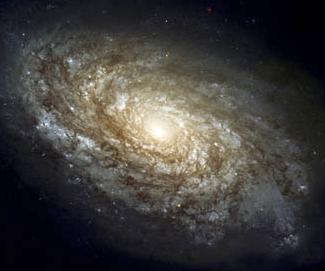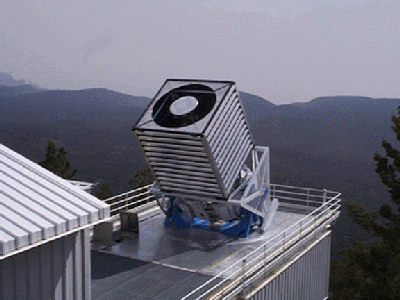After the lights went out in the northeastern United States and Canada last week, it took only about a day for power to be fully restored to the thousands of communities that succumbed to the darkness. Meanwhile, astronomers have noticed another, more gradual blackout is spreading through the universe, but it appears that there’s no hope that the lights will ever shine so brightly again in its countless galactic neighborhoods.
Ben Panter and Alan Heavens from the Institute for Astronomy at Edinburgh University recently teamed with University of Pennsylvania colleague Raul Jimenez to sneak a peek at a few nearby galaxies — 37,752 of them, to be exact. The trio used this data, freshly culled from the ongoing Sloan Digital Sky Survey (SDSS), to create the first complete histories of star formation and chemical composition for such a voluminous and diverse population.
The results, appearing in this week’s Monthly Notices of the Royal Astronomical Society, confirm longstanding notions that the universe is past its birthing prime and already well on the way toward a dark and frigid future.
Stars — from brilliant and short-lived blue supergiants to steady, slow-burning red dwarfs — typically form within clouds of molecular gas dispersed throughout galaxies of all shapes and sizes. The amalgam of light from any particular galaxy represents a luminous inventory of every star within. However, sifting through galaxy light and attributing trends to single classes of stars and their formation rates over time can be exceedingly difficult.
With uber-sets of data like this one from the Sloan survey, the problem becomes even more problematic unless novel methods are employed. For each galaxy spectrum in the SDSS database, there are nearly 4,000 measurements in 25 dimensions. Straightforward analysis of one spectrum could take two years on a high-end PC workstation running non-stop.
According to Heavens, his team’s analysis of the SDSS data indicate that the stellar birth rate of the 14-billion-year-old universe peaked roughly six billion years ago, around the time that the sun was born. Ever since, star formation has been on a downward slope of stellar menopause. In addition, the researchers found that the chemical distribution of star-forming gas peaked roughly three billion years ago.
Astronomers have long pointed to the fact that many galaxies have a reddish appearance — indicating a paucity of young, hot, blue stars and a preponderance of older, redder stars — as probable evidence that the star-formation era is coming to a close. The latest results from Heavens and his colleagues are the first to confirm such inklings without the aid of any simplifying assumptions.
With galaxies’ stellar populations continuing to age and available metal-rich star-forming gas on the decline, the universe seems doomed to slip gradually into a universal blackout.











